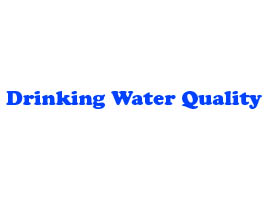Pakistan is blessed with adequate surface and groundwater resources However, rapid population growth and urbanization have placed immense stress on water resources of the country. According to the United Nations’ “UN World Water Development Report“, the total actual renewable water resources decreased from 2,961 m³ per capita in 2000 to 1,420 m³ per capita in 2005 (IUCN, 2011)
Groundwater is one of the main sources of drinking water is major cities of Pakistan. Groundwater is pumped from private and government tube wells and used for drinking but also for gardening, washing and other purposes. The exploitation of groundwater in the Provinces of Pakistan is complicated due to a number of natural and man made factors. The numbers of tube wells have increased from 2700 in 1950 to over 600, 000 in the year 2003.
The Ministry of Environment has adopted a National Drinking Water Policy to address key issues and challenges facing in Pakistan in the provision of sustainable access to safe drinking water, for improving the quality of life of people of Pakistan and physical environment necessary for healthy life. A main objective is a clearer segregation between the functions of service provision and regulation. The right to water for drinking precedes all other uses, like industrial or agricultural water use. Women are recognized as main actors of domestic water supply, and their active participation in the sector is sought.
In accordance with the LGO, the document highlights the responsibility of local governments to provide drinking water. The policy is expected to be reviewed and updated every five years to examine its implementation and efficacy and to adapt it to the changing situation in the country. It came into force in September 2009, but now due to devolution of Ministry of Environment it is being followed by the Provincial Environmental Protection Agencies.
The devolution introduced on August 14, 2001, has changed the implementation process and mechanism of water supply and sanitation delivery system completely. The traditional line departments within the provincial government’s set-up to plan, execute and maintain such facilities has been abolished, and a new structure based on Tehsil Municipal Administration (TMA) is introduced to provide water supply and sanitation services.
The existing water resources, both surface and groundwater are under threat due to pollution caused by municipal wastewater disposal, industrial wastewater disposal and, disposal of saline and chemically polluted agricultural runoff. There is no regular monitoring of quality of all water resources and water points at the national/provincial/district level by agency of any Government of Pakistan to identify problem areas, causes of contamination, and design a framework of corrective plans.
Tehsil Municipal Administrations (TMA) mostly do not keep a record of water quality and monitoring, therefore, water quality data at source and at consumer level is not available. Conventional treatment of water i.e., sedimentation, flocculation and clarification is not suitable for microbial treatment, Chlorination is also not recommended owing to carcinogenic by products of the process. Similarly activated carbon is not enough to treat the water and make it suitable for human consumption. After treatment, the water supply system is not efficient; mostly the leaky pipes and their location next to the sewerage lines again contaminate it making unfit for drinking.
It was found that 45% of infant deaths have been attributed to diarrhoea and about 60% to overall infectious waterborne diseases in Pakistan. According to the World Health Organization (WHO) 25-30% of the diseases are gastro-intestinal in nature. The poor quality of drinking water has forced a cross-section of relatively better-off citizens to buy bottled water. Rising demand for the bottled water has been powered by these classes switching to bottled water to avoid water borne diseases. As a consequence of this expanding market a mushroom growth of bottled water industry in the country is witnessed during the last few years. However, many of the mineral water companies were found selling contaminated water (PCRWR, 2011).
The market for bottled mineral water has risen by at least 15 per cent a year from the existing capacity as the quality of tap water depletes persistently in Pakistan (Dawn, 2011 (a)).
The quantum of the demand is projected to be around 1.1 billion litres as the awareness about the quality of drinking water grows in the society. There is an immense potential for private investors for provision of safe and clean bottled water, but the private investor is required to utilize the high efficiency water treatment technology for better quality of water. As the older methods used are getting obsolete. There is a need for regular water quality monitoring by PCRWR which should be done and results published bi annually.
By Saadat Ali, Environmental Consultant, Website: http://projectpi.pk/ Email: Saadat9@yahoo.com




